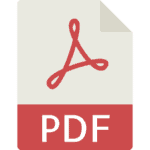Filter by: FEDERAL DISTRICT
Filter by Price
Filter by: FILE TYPE
Defendants’ Motion for a Protective Order to Sequence Discovery on Liability
A motion for protective order refers to a party’s request that the court protect it from potentially abusive action by the other party. Such a request is often made in relation to discovery, as when one party seeks discovery of the other party’s trade secrets. A protective order from discovery protects the person who would otherwise have to provide discovery (e.g. answer interrogatories, answer deposition questions on a subject, provide documents responsive to a request for production of documents, to allow someone to inspect premises, or to participate in a forensic medical.
Defendants’ Motion for Summary Judgment
Document is a request for the Court from the Defendant to rule that the other party has no case, because there are no facts at the issue.
Defendants’ Motion in Limine RE Reference to the Americans With Disabilities Act or Fair Housing Act – Civil Law Legal Document
Motion filed by a party to ask the court for an order to limit or prevent evidence from being presented by the other side during trial.
Defendants’ Motion to Coordinate Depositions
Defendant’s motion to move to coordinate the depositions between the related cases currently pending in two district courts.
Defendants’ Motion to Dismiss
Defendant’s motion to dismiss people from the lawsuit on the grounds that the complaint fails to state a claim upon which relief can be granted.
Defendants’ Motion to Spike Plaintiff’s Expert’s Testimony and Report Pursuant to Law – Cival Law Legal Document
Motion to spike plaintiffs expert testimony on basis the testimony is not based on reliable scientific facts or reliable resources.
Defendants’ Notice of Removal – Personal Injury
Defendant’s notice of removal to remove the instant case to the United States District Court for the District of Colorado. A notice of removal is signed by the defendants and filed in federal court to begin the process of transferring the civil action from state court to federal court. Promptly after the filing of such notice of removal of a civil action the defendant or defendants shall give written notice thereof to all adverse parties and shall file a copy of the notice with the clerk of such State court, which shall effect the removal and the State court shall proceed no further.
DEFENDANTS’ RESPONSE IN OPPOSITION TO PLAINTIFFS MOTION FOR ATTORNEY FEES AND COSTS AND REQUEST FOR HEARING
A sample response to request for attorney fees including a request for a hearing on the attorney fees matter.
Defendants’ Summary Judgment – Slip and Fall Case
Document is a request for the Court from the Defendant to rule that the other party has no case, because there are no facts at the issue.
Defendants’ Trial Brief
A small sample brief to a defense against the fair labor standard act and Colorado minimum wage act.
Defendants’ Trial Brief – Personal Injury
A trial brief sets forth the facts, evidence, and legal arguments the party intends to present at trial. A trial brief includes issue, which identify the issue raised by the facts of the client’s case. Rule , which identify the law(s) that controls the issue(s). Analysis, which explains how the rule of law apply to the issue(s). Conclusion, which is a summary of the legal analysis.
Defendants’ Combined Motions in Limine
Defendants motion to exclude from trial testimony and evidence of (1) expiration of the statute of limitations against; (2) Defendants’ budget, profit, and bonus policies; (3) irrelevant previous crimes; (4) Defendants’ firearm policy; (5) subsequent remedial measures; (6) Defendants’ alleged failure to produce evidence; (7) Plaintiffs’ injuries; (8) insurance coverage; and (9) placing the jury into the Plaintiffs’ position.
DEFENDANTS’ JOINT MOTION FOR ISSUANCE OF RULE 17(c) SUBPOENAS
DEFENDANTS’ JOINT MOTION FOR ISSUANCE OF RULE 17(c) SUBPOENAS
Defendants’ Joint Notice Of Motion And Motion For Bill Of Particulars
Motion for bill of particulars is a motion for expulsion of facts the prosecution intends to prove and the limitation of these facts during trial.














